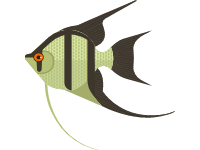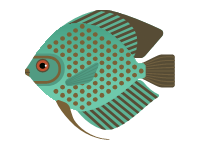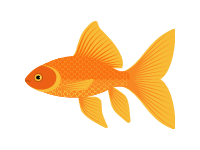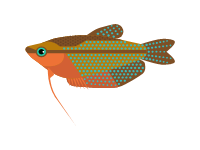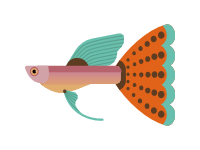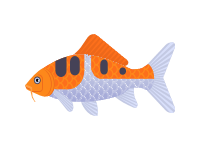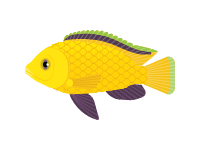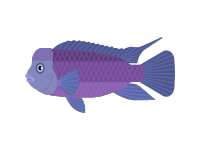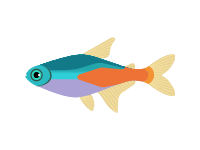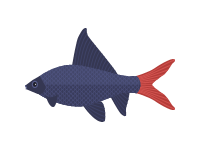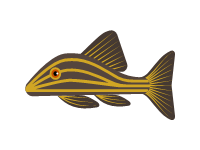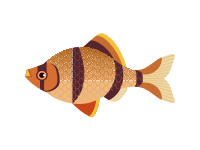The goldfish (Carassius auratus) is a freshwater fish in the family Cyprinidae of order Cypriniformes. It is one of the most commonly kept aquarium fish.
A relatively small member of the carp family (which also includes the Prussian carp and the crucian carp), the goldfish is native to East Asia. It was first selectively bred in ancient China more than 1,000 years ago, and several distinct breeds have since been developed. Goldfish breeds vary greatly in size, body shape, fin configuration, and coloration (various combinations of white, yellow, orange, red, brown, and black are known). As of April 2008, the largest goldfish in the world was believed by the BBC to measure 19 inches (48 cm), and to be living in the Netherlands. At the time, a goldfish named 'Goldie', kept as a pet in a tank in Folkestone, England, was measured as 15 inches (38 cm) and over 2 pounds (0.91 kg), and named as the second largest in the world behind the Netherlands fish. The secretary of the Federation of British Aquatic Societies (FBAS) stated of Goldie's size, 'I would think there are probably a few bigger goldfish that people don't think of as record holders, perhaps in ornamental lakes'.In July 2010, a goldfish measuring 16 inches (41 cm) and 5 pounds (2.3 kg) was caught in a pond in Poole, England, thought to have been abandoned there after outgrowing a tank. Goldfish have one of the most studied senses of vision in fishes. Goldfish have four kinds of cone cells, which are respectively sensitive to different colors: red, green, blue and ultraviolet. The ability to distinguish between four different primary colors classifies them as tetrachromats.Goldfish have one of the most studied senses of hearing in fish.They have two otoliths, permitting the detection of sound particle motion, and Weberian ossicles connecting the swimbladder to the otoliths, facilitating the detection of sound pressure.
